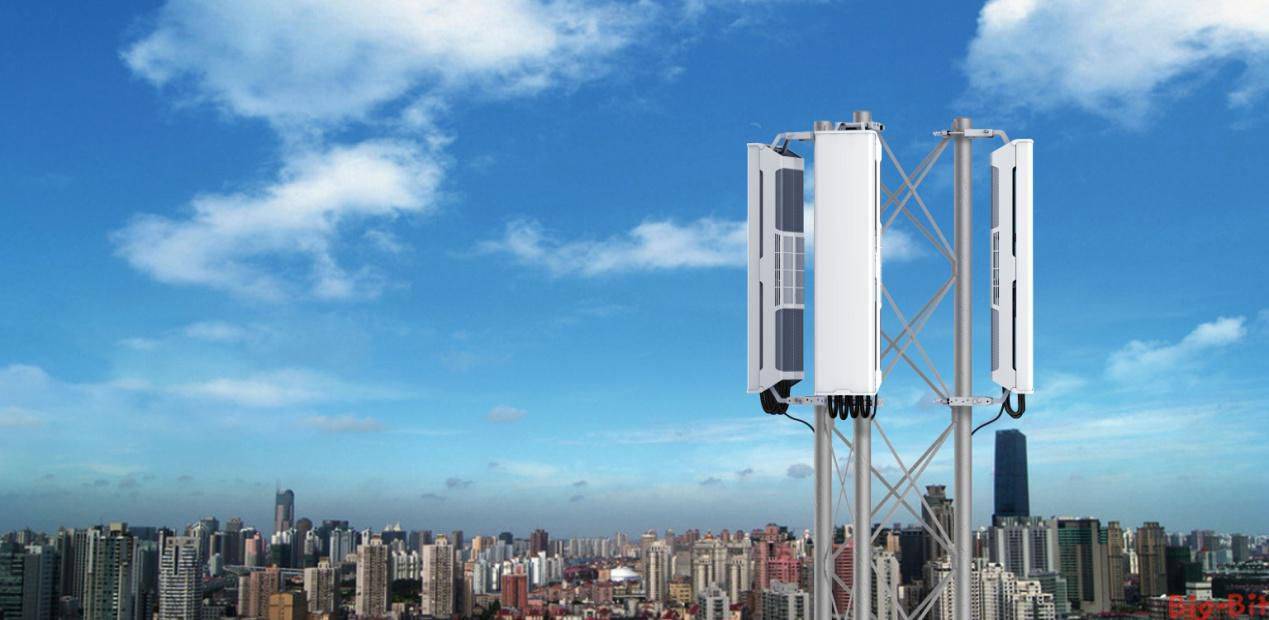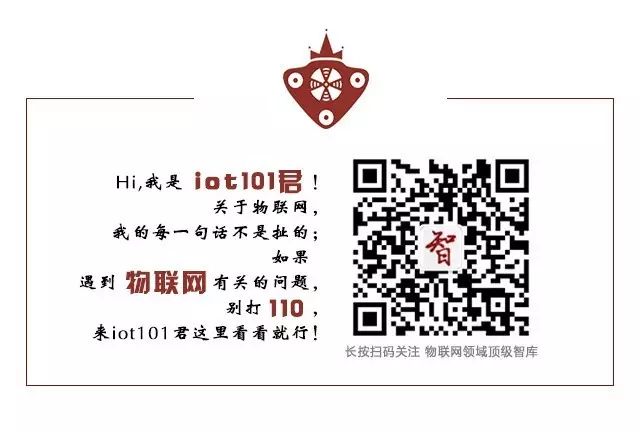
Author: Zhao Xiaofei
IoT Think Tank Original
Reprint must indicate the source and origin
—— 【Introduction】 ——
After the maturity of low-power wide-area networks, operators will certainly hope to connect more terminal devices and utilize more public resources. During the large-scale development of the Internet of Things, regulatory agencies will inevitably take action, focusing on business attributes, operating licenses, and spectrum usage.

A few weeks ago, I pointed out in the article “Have You Been Trapped by the Hype of NB-IoT, LoRa, and Other Technologies?” that what we need to discuss more now are the issues in the implementation of low-power wide-area networks, and we should not avoid these problems. Today, we can explore the environment faced by low-power wide-area networks from the perspective of regulation. Over the past year, regulation seems to be a topic that many practitioners prefer to selectively forget, but in reality, it is an insurmountable hurdle. Back in April 2016, I raised the issue of facing regulation in the article “Navigating Through the Fog of Regulation: Exploring Business Attributes in the Large-Scale Deployment of Low-Power Wide-Area Networks,” but at that time, the entire industry was still in a very early stage, and regulation was not a major issue in the industry. However, judging from the current environment, 2018 is a critical point for the large-scale expansion of low-power wide-area networks, and the issue of regulation must be faced.
The Necessity of Regulation
Wide-area networks that provide services to various customers, including individuals, families, governments, and enterprises, possess infrastructure attributes. Especially when this network reaches a certain scale and forms an operator-level network covering urban and broader areas, it will open up to all legal terminals within its business scope, allowing all devices that require connection services to access the network. At this point, this network will have a significant impact on many industries and people’s lives, and its deployment and operation will consume a lot of public resources. Therefore, it is not merely a market behavior; it is very necessary to include it under regulation and policy constraints. In the century-long practice of the telecommunications industry, various countries have established specialized agencies for regulation, such as the FCC in the United States, Ofcom in the UK, and the European Telecommunications Committee, which regulate communication networks. This is not a forced control by the government over market economic laws, but rather a necessary adjustment at the top level due to the industry’s occupation of public resources and its impact on the national economy and people’s livelihoods, which requires a certain degree of regulation without interfering with normal market activities of enterprises.
Low-power wide-area networks will also fall into this category. Currently, whether it is NB-IoT or LoRaWAN, due to being in the early stages of commercialization, the scale effect has not yet emerged, and there has been little discussion on regulation. However, in the near future, after low-power wide-area networks mature, operators will certainly hope to connect more terminal devices and utilize more public resources, and regulatory agencies will inevitably take action.

In the current domestic environment, NB-IoT is deployed by the three major operators, operating entirely within the regulatory framework. However, networks based on unlicensed spectrum technologies such as NB-IoT, LoRaWAN, RPMA, and Sigfox, which has long sought to enter China, currently have a small scale, and some regulatory policies are still undecided. However, this is definitely a topic that cannot be avoided.
Business Attributes, Operating Licenses, and Spectrum Usage Issues Are Prominent; No More Walking on the Edge of Regulation
The inclusion of low-power wide-area networks under regulation has specific legal and regulatory basis, and these bases are mandatory.
First, the city-level and above scale networks of NB-IoT, LoRaWAN, RPMA, etc., that have been deployed in the country will certainly fall under the regulation of the “Telecommunications Regulations of the People’s Republic of China.” The revised version of the regulations in 2016 has clearly defined the objects of regulation: activities that transmit, emit, or receive voice, text, data, images, and any other forms of information using wired or wireless electromagnetic systems or optoelectronic systems. According to this definition, low-power wide-area networks certainly belong to this category, and various definitions, specifications, and requirements derived from the regulations must be followed during the deployment and commercialization of low-power wide-area networks, including the “Telecommunications Business Classification Directory” and the “Telecommunications Business Operating License Management Measures,” etc.
Secondly, various low-power wide-area networks must occupy radio frequency spectrum resources and will inevitably be included under the regulation of the “Radio Management Regulations of the People’s Republic of China.” This is because radio frequency spectrum is a non-renewable public resource, and even technologies using unlicensed spectrum will be regulated by regulatory agencies when they excessively or unnecessarily use public resources.
In my view, among all regulatory measures, the three aspects that have the greatest impact on low-power wide-area networks can be examined: business attributes, operating licenses, and spectrum usage. Next, we will analyze them one by one.
1. Business Attributes: The Awkwardness of Basic Telecommunications Services
According to relevant regulations, business attributes can generally be divided into basic telecommunications services and value-added telecommunications services. When an operator deploys a city-level low-power wide-area network, a large number of industry terminals and public IoT terminals will connect to the network, making the business attribute positioning of this network somewhat awkward.
The most recent document that provides a basis for the business positioning of wide-area wireless networks is the “Telecommunications Business Classification Directory (2015 Edition),” which does not specifically describe low-power wide-area networks. However, a careful study of this directory can yield a basic categorization. I believe that low-power wide-area networks should fall under the “A25-1” classification, which is “wireless access facility service business” in the second category of basic telecommunications services.
Why is it positioned as “wireless access facility service business”? Let us look at the definition of such services: “Network access facility service business provided wirelessly, specifically referring to the wireless access facility service business provided to end users. The network location of wireless access facility services is between the network business node interface (SNI) and the user network interface (UNI), with all or part of the transmission medium using wireless methods. The operator of the wireless access facility service business should build wireless access network facilities located between SNI and UNI and can engage in the rental or sale of network elements of the wireless access network facility.”

Clearly, low-power wide-area networks have a strong correspondence with this: network operators generally deploy base stations/gateways to connect with terminals through a star architecture, which is precisely the construction of wireless access network facilities located between SNI and UNI; data transmission between terminals and base stations is achieved through this access network, while the base station and server side generally use existing 3G/4G wireless networks or optical transmission, mainly providing access services. Furthermore, the future access of a large number of consumer IoT terminals further increases its attributes as a second category of basic telecommunications services.
Currently, NB-IoT is uniformly deployed by the three major operators, and the services provided by these operators are basic telecommunications services. Since NB-IoT is an upgrade based on the existing FDD LTE network, it is also appropriate to position it as a basic telecommunications service. However, many cities in China already have LoRaWAN network coverage, and a few cities have deployed RPMA networks. When these networks provide services, they are undoubtedly providing second category basic telecommunications services, and their regulatory measures are also included under basic telecommunications business.
Additionally, many manufacturers in the industry chain are promoting the commercial use of NB-IoT based on unlicensed spectrum, which mainly provides private network services for some industry users. If strictly following the “Telecommunications Business Classification Directory,” this also falls under basic telecommunications services, but it is not open to the public. Over the past few years, various government, public security, and railway private networks have also had considerable operational and regulatory experience.
If positioned as basic telecommunications services, it will create significant awkwardness, particularly regarding licensing issues.
2. Operating Licenses: Still Walking on the Edge of Policy?
Here comes the problem: since it operates as a second category basic telecommunications service, a telecommunications business operating license is essential. From the past issuance of licenses, apart from the three major operators, very few manufacturers hold basic telecommunications business licenses, and the threshold for obtaining a license is extremely high.
In the latest revised “Telecommunications Business Operating License Management Measures,” the primary condition for operating basic telecommunications services is that the operator must be a company legally established specifically for basic telecommunications services, with at least 51% of the company’s shares owned by Chinese entities. This condition may exclude many operators that have already deployed city-level LoRaWAN and RPMA networks.

Even for dedicated networks used solely for industry IoT applications, there are high thresholds. The “Telecommunications Regulations of the People’s Republic of China” clearly state that operators of dedicated telecommunications networks in their respective regions must apply according to the conditions and procedures specified in these regulations and obtain a telecommunications business operating license.
Of course, as far as I know, manufacturers that have deployed LoRaWAN and RPMA in various cities have had in-depth communication with local authorities before network construction, and only proceeded with network deployment and operation with government support. However, there has not been a clear definition regarding business positioning and licensing. Nevertheless, this support is given under the balance of government industrial development and regulatory considerations, but it is not necessarily backed by clear legal or regulatory provisions, thus creating a state of walking on the edge of policy and facing considerable policy risks.
3. Spectrum Issues: Is Free Spectrum Really a Free Lunch?
Similarly, regarding the spectrum usage of low-power wide-area networks, current regulations do not have very clear provisions. The latest version of the “Radio Management Regulations of the People’s Republic of China,” released last November, does not specify regulations for the use of low-power, long-distance radio frequencies.
The deployed NB-IoT operates on authorized frequency bands, and the Ministry of Industry and Information Technology clearly stated in a notice this June: “Telecommunications operators can choose to deploy NB-IoT systems in the assigned GSM or FDD IMT system frequency bands according to their needs, using in-band working mode, guard band working mode, or standalone working mode. The frequency usage period is consistent with the public mobile communication system frequency usage period for the corresponding frequency band.” It can be said that the spectrum usage of NB-IoT has very clear regulatory protection, and authorized spectrum also ensures reliability in network connection services.
However, other technologies using unlicensed spectrum are not so fortunate. Currently, city-level LoRaWAN networks generally use the 470-510MHz frequency band, while unlicensed spectrum NB-IoT may also use this band, and RPMA uses the globally unified 2.4GHz, all of which are free public bands.
Although these are free resources, they have very typical public product characteristics, namely non-exclusivity, meaning all legal entities can use them. For over a century, economists and regulatory agencies have struggled with the allocation and reasonable use of public products because free public products can easily lead to overuse, and public resources are limited. The non-exclusivity characteristic allows many users to enter, resulting in resource waste and disorderly competition.
In early 2016, the IoT Think Tank published a related commentary article on this issue titled “Low-Power Wide-Area Networks and ISM Bands: A Milestone for IoT or a Tragedy of the Commons?” The deployment of unlicensed spectrum networks is very flexible and low-cost, but this characteristic also provides conditions for occupying public spectrum resources. Currently, the LoRaWAN and RPMA networks deployed in various cities in China do not face serious spectrum consumption issues due to the small number of users. However, we must not forget that these networks have the characteristic of large connectivity. Given time, as IoT applications become more diverse, connecting massive terminals will lead to complex electromagnetic interference when many devices simultaneously transmit and receive through wide-area networks. Even optimized frequency modulation technologies cannot completely avoid this issue, which will become prominent, and this is an irreversible process. At that time, addressing the depletion of public resources will be very challenging.

Therefore, radio frequency regulatory agencies will not sit idly by and will introduce relevant regulatory measures before issues become prominent. Although it is a public free band, it still needs to be planned uniformly. Currently, enterprises are more in a land-grabbing state, hoping to occupy quality resources first, but radio frequency regulatory agencies have already realized this issue: free spectrum is not really a free lunch.
Balancing Market Development and Regulation
In discussions with colleagues in the industry, I feel that many products using unlicensed spectrum technologies may intentionally or unintentionally avoid these regulatory issues, while regulatory agencies have not yet formed conclusions due to the lack of clear regulations. I believe it is time to face and resolve these issues, requiring close cooperation and joint efforts from both enterprises and regulatory agencies. Enterprises need to strengthen communication with regulatory agencies when using public resources, and regulatory agencies need to expand their research scope to understand the status of industrial development.
As the rapid development of low-power wide-area networks brings the IoT industry to the brink of large-scale explosion, it is essential to grasp the balance between market development and regulation in the process of improving the regulatory system for low-power wide-area networks. Regulatory agencies should focus on planning new policies from the perspective of promoting the orderly use of public resources and fair market competition. Given the rapid development of low-power wide-area networks in the past two years, the current “Telecommunications Regulations,” “Radio Management Regulations,” and their derived regulations do not contain specific targeted content. However, I believe that specific content will emerge in future revisions, and we hope to see a reduction in the entry barriers for market-oriented behaviors and an increase in the planning for the use of public resources. For example, lowering the application threshold for operating licenses for dedicated IoT networks and establishing clearer planning and allocation systems for the use of unlicensed spectrum in wide-area networks.
Companies in this industry should not selectively forget or avoid these issues. The regulatory “big hand” regarding LoRaWAN, RPMA, and unlicensed spectrum NB-IoT networks will definitely play a role. We need to be more rational and communicate with regulatory agencies from a long-term development perspective, fostering a collaborative pattern of industrial development and orderly regulation.

Previous Hot Articles (Click on the title to read directly):
-
“How Difficult Is It to Make Smart Locks for Shared Bicycles?”
-
“Cognitive Computing, Blockchain IoT, IoT Security… Those Who Understand Will Control the Future”
-
“KUKA, ABB, Fanuc, Yaskawa: The Four Industrial Robot Giants Have Long Been Stationed in the IoT Field”
-
“[Heavyweight] IoT Industry Panorama Report: The First Domestic IoT Industry Two-Dimensional Perspective Panorama”
-
“A Cartoon Explains: Besides WiFi and Bluetooth, What Can the Recently Popular NB-IoT Do?”
-
“A Cartoon Explains: Behind NB-IoT, What Is LoRa That Everyone Is Talking About?”
